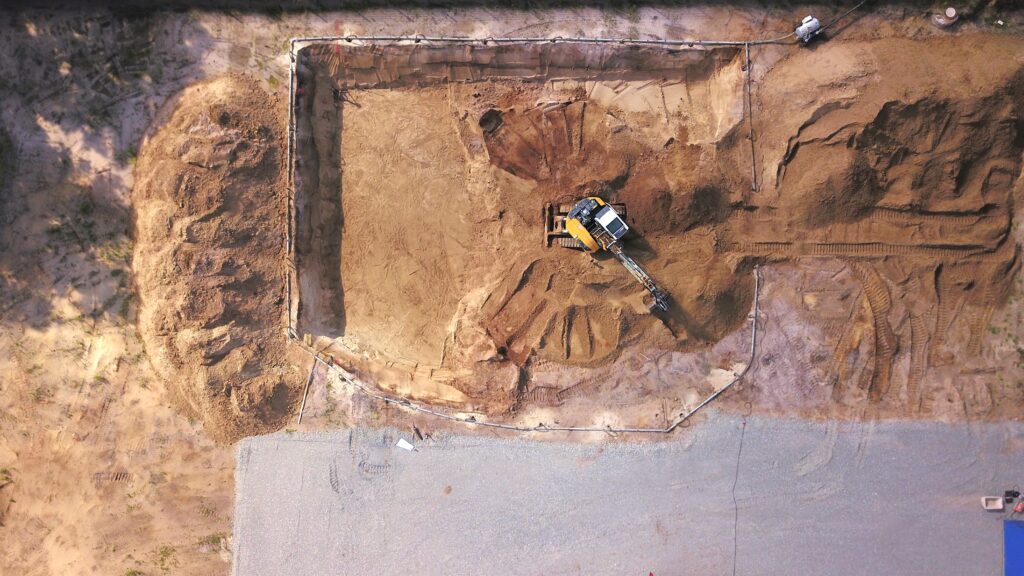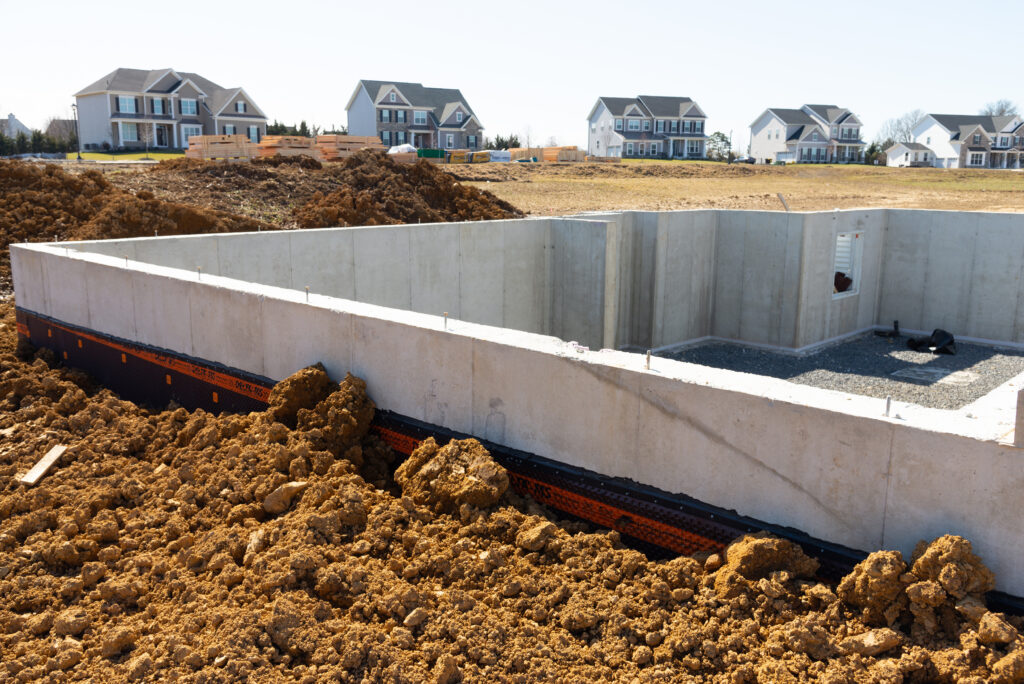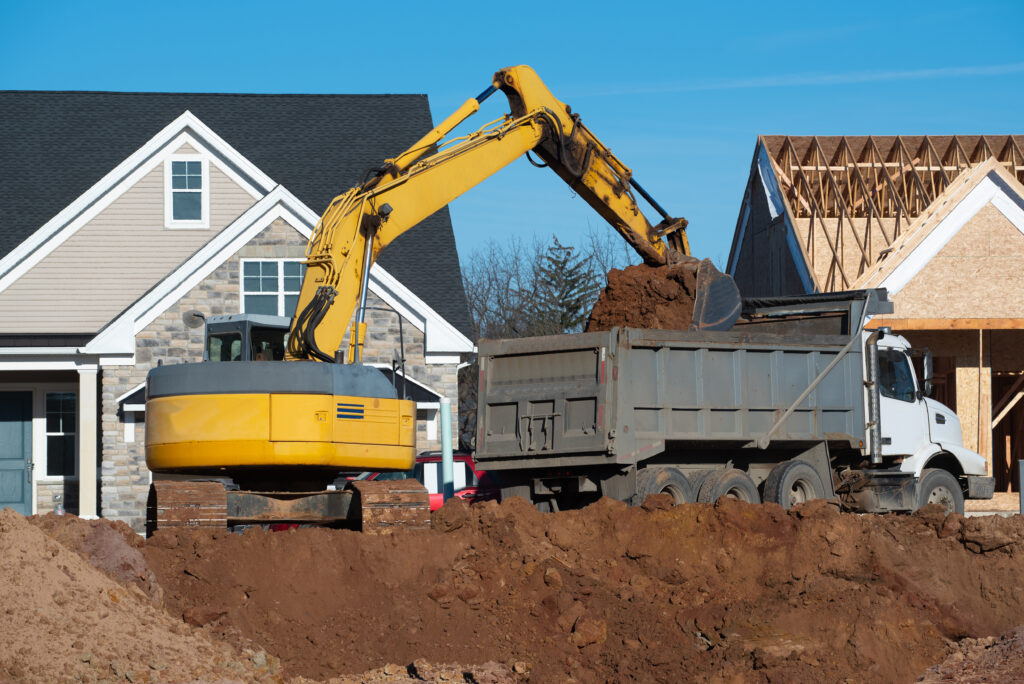Thinking about digging out a basement for your new build? There are a few things you may want to consider before making any big decisions. This guide will walk you through four of the most common basement excavation methods and help you figure out which one might be best for you and your property.
- What Is Basement Excavation?
- 4 Common Methods for Basement Excavation
- Things to Consider When Choosing the Right Basement Excavation Method for Your New Build
What Is Basement Excavation?
Simply put, the basement excavation process removes dirt, rock, and debris to create space for a basement. It’s usually the first step in building a new home, leaving a hole in the ground for the basement to be built.
It is also possible to dig out a basement after a home has already been built. However, this type of work is much harder to execute and will require an experienced excavation contractor who can get the job done without damaging your building’s foundation, footings, or floor joists.
So in order to drastically reduce excavating costs and foundation concerns, basements should be dug out before any part of the new building goes up.
4 Common Methods for Basement Excavation:
Open-Cut Method
There are two ways to execute open-cut basement excavation:
Slope Open-Cut: This method creates an excavated area with walls that are on a downward slope. The excess dirt is then layered on top of this slope.
Pros:
- It doesn’t require any retaining walls to hold back the earth from crumbling onto your building’s foundation.
- It has some of the lowest excavating costs of the four basement excavation techniques.
Cantilever Open-Cut: This method creates an excavated area using retaining walls to keep the surrounding terrain from crushing your foundation.
Pro:
- It allows you to dig much deeper basements.
Con:
- It is a more complicated and expensive variant of the open-cut method.
Bracing Method
The bracing method uses straight, horizontal struts in front of the retaining wall to keep the material pressure off of your retaining wall. These struts run from one side of the foundation to another and can serve as the framing for the basement in your building, as long as they are properly spaced.
Pro:
- It does a good job of reducing strain on your retaining walls and produces a sturdy final product.
Con:
- The bracing method is pricier than most open-cut excavations.

Anchored Method
The anchored method of excavation involves installing steel anchors to counter the earth’s pressure during excavation. These anchors are inserted into the soil and run through the retaining wall — the higher the soil strength the greater the anchoring force.
Pro:
- The anchoring force of the earth provides stability to the overall structure and allows excavation to proceed swiftly and safely.
Con:
- This method will only work if you drive the anchors into bedrock or extremely dense clay. Soft clay or sandy soil cannot provide the strength needed to brace anchors.
Island Method
The island method starts by excavating an area near the center of the basement. The excavated materials are then placed near the retaining walls, generating a slope. The slope will continue all the way to the outer retaining walls until the center structure is ready to be braced with struts.
Pros:
- It is one of the safest ways a person can clear out an excavated area.
- It combines elements of the open-cut slope method and the bracing method to create a remarkably sturdy basement and a safe work environment.

Things to Consider When Choosing the Right Basement Excavation Method for Your New Build:
The choice of how to excavate a basement will be made by the project owner and the excavating contractor on the job. When choosing the best excavation method for your project, consider the following factors.
Type of construction and budget. The best way to execute basement construction is to start with a fresh plot of land. Building your basement before building the rest of your home makes for a faster, more affordable excavation. Digging out a basement space beneath an existing building will only leave you with fewer options and higher costs.
NOTE: Make sure you consult an excavating contractor and a structural engineer before starting any excavation project.
Soil type. The quality and density of soil beneath your structure ultimately affect the type of excavation needed. For example, sandy soil will require you to dig deep until you reach bedrock to properly secure your structure. This means that you will need to use a method that allows deep excavation, like an open-cut cantilever. However, if you are building a basement in dense clay soil, you may not need to dig very far down and could use a slope method for excavation.
Topography. Building on a hillside can add extra pressure to your retaining walls. This means your new build may require the anchored method of excavation, in which the earth helps keep your walls stable. However, you’ll have more excavation options when building on a flat piece of land.
NOTE: It’s important to keep the water table in mind—if the water table is close to the surface, you won’t be able to dig very deep without having to drain the water.
Top Notch Excavation Services
Are you looking for top-notch excavation services you can put your trust in? Our experience in excavating is second to none in the West Michigan community. And when it comes to basement excavation, it’s important to do it right the first time. We have the heavy equipment and experience needed to help you get the job done.
Still have some questions about basement excavation or any of our related services, like drainage for your property or soil & aggregate delivery for your large projects? Give us a call or leave us a message!


